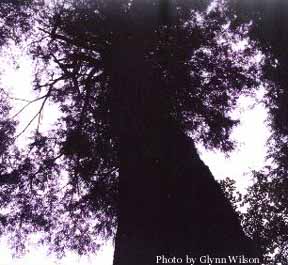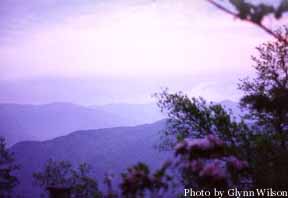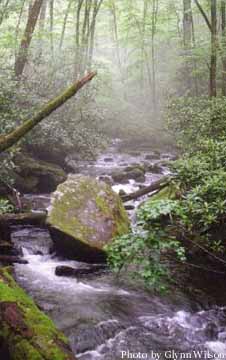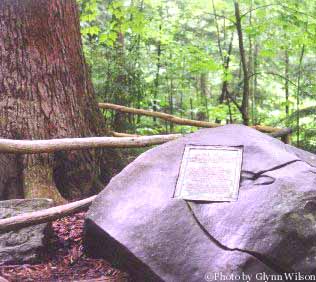Day Trip to the Joyce Kilmer Memorial Forest
I think that I shall never see A poem lovely as a tree A tree whose hungry mouth is prest Against the earth's sweet flowing breast; A tree that looks at God all day, And lifts her leafy arms to pray; A tree that may in Summer wear A nest of Robins in her hair; Upon whose bosom snow has lain; Who intimately lives with rain. Poems are made by fools like me, But only God can make a tree. — Joyce Kilmer (Dec. 6, 1886-July 30, 1918). By Glynn Wilson Amazingly in the land of 10 million tourists a year in East Tennessee and West North Carolina, we traveled for miles without seeing another vehicle or a single human being. When we reached the mountaintop, the clouds hung in the lower peaks below us, and just a hint of the late afternoon sun made the higher clouds shine violet. Heat lightning flickered amber on the horizon back toward Knoxville. The energy shimmered off the lush forest-green canopy. The legendary blue mist hung heavily in the rolling peaks. A slight breeze made the treetops whisper, and the ancient fear sent a shiver up my spine.
In this impressive 3,800-acre patch of land formerly roamed only by the Cherokee people — now protected from all logging — there are yellow or tulip poplars, red oaks and hemlock pines, some standing 100 feet tall, 20 feet in diameter at the base. No two people could hug these trees, although a little meditation in the right spot on the roots might relieve your urban tension and help you carry on your life with a renewed spirit. You might even spot a stump from one of the ancient chestnuts, killed by the blight. While the giant sequoias, redwoods and Douglas firs in the Great Northwest can grow much larger, these are as big as trees grow today in the Southeastern United States, and there aren't many left.
A fluke of economics, or perhaps the right energy, is the only thing that saved this patch of virgin timber here in the Little Santeelah Creek basin. According to historians, time was running out for the virgin woods of Little Santeelah in the 1920s, as the giant cross-saws sang in the neighboring valley of Slickrock Creek for years. The Babcock Land and Timber Co. harvested most of the sugar maple, tulip poplar, oak, and hemlock, floating them down to a rail line along the Little Tennessee River. "By the early 'thirties, the Little Santeelah forest was an isolated island in a sea of cleared lands," wrote Bill Greer. "Inevitably it fell under the gaze of the lumbermen, but each time they moved into the valley, its huge yellow poplars and chestnuts filled them with awe. Some mysterious protection prevented them from swinging the axes." Word is that the land changed hands several times, each owner eager to gain the riches from felling the giant hardwoods towering over the stream. "But whether because of a lumberman's respect for nature's mightiest, the financial hardship enveloping the country, or an unknown force," he said, "the blades never cut."
On the way up the mountain, we stopped at the last gas station and store for miles at the Motorcycle Only Motel and stocked up on smoked trout subs, potato salad and water. The proprietor said the recipe was secret, so I didn't probe. We saved the picnic for the Joyce Kilmer Memorial rock and tree, where veterans in the 1930s honored the poet, a war hero who died in France during World War I. His famous poem now rests solidly in the collective memory of millions, many of whom are beginning to appreciate the strength and power of ancient forests. If you've never seen it and felt it, you're missing out on one of the greatest wonders of the natural world.
Copyright © The Southerner 2000. 
|





